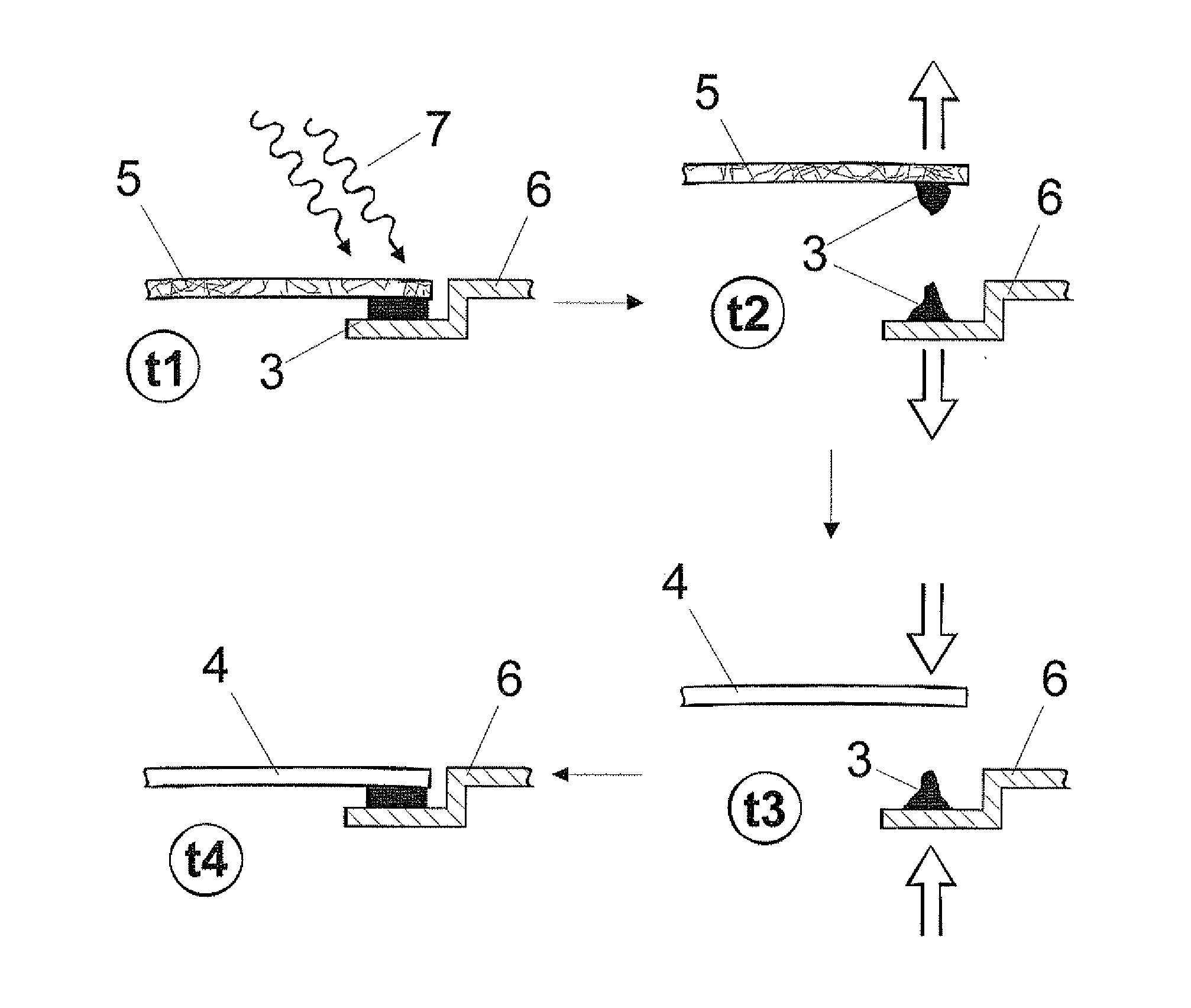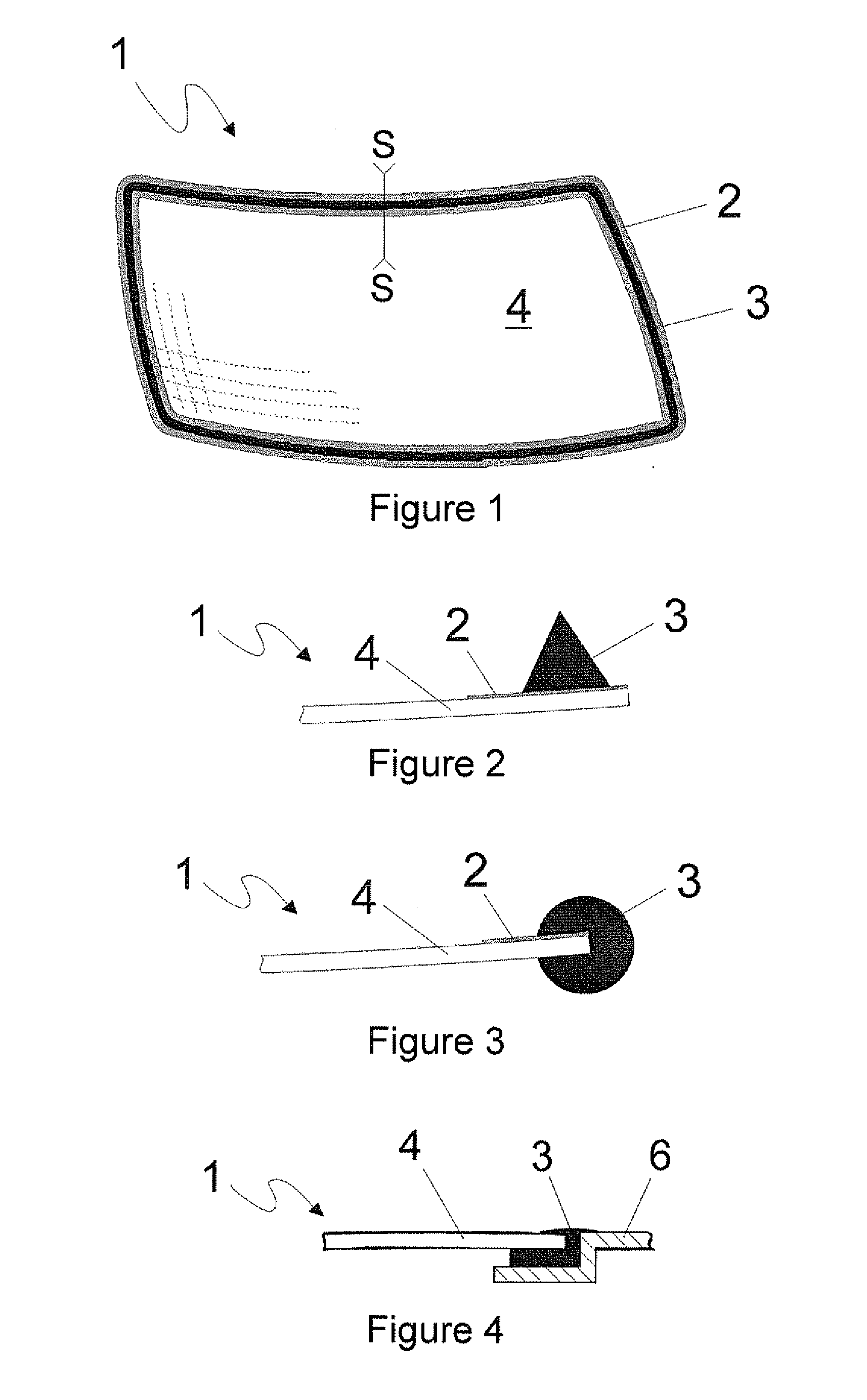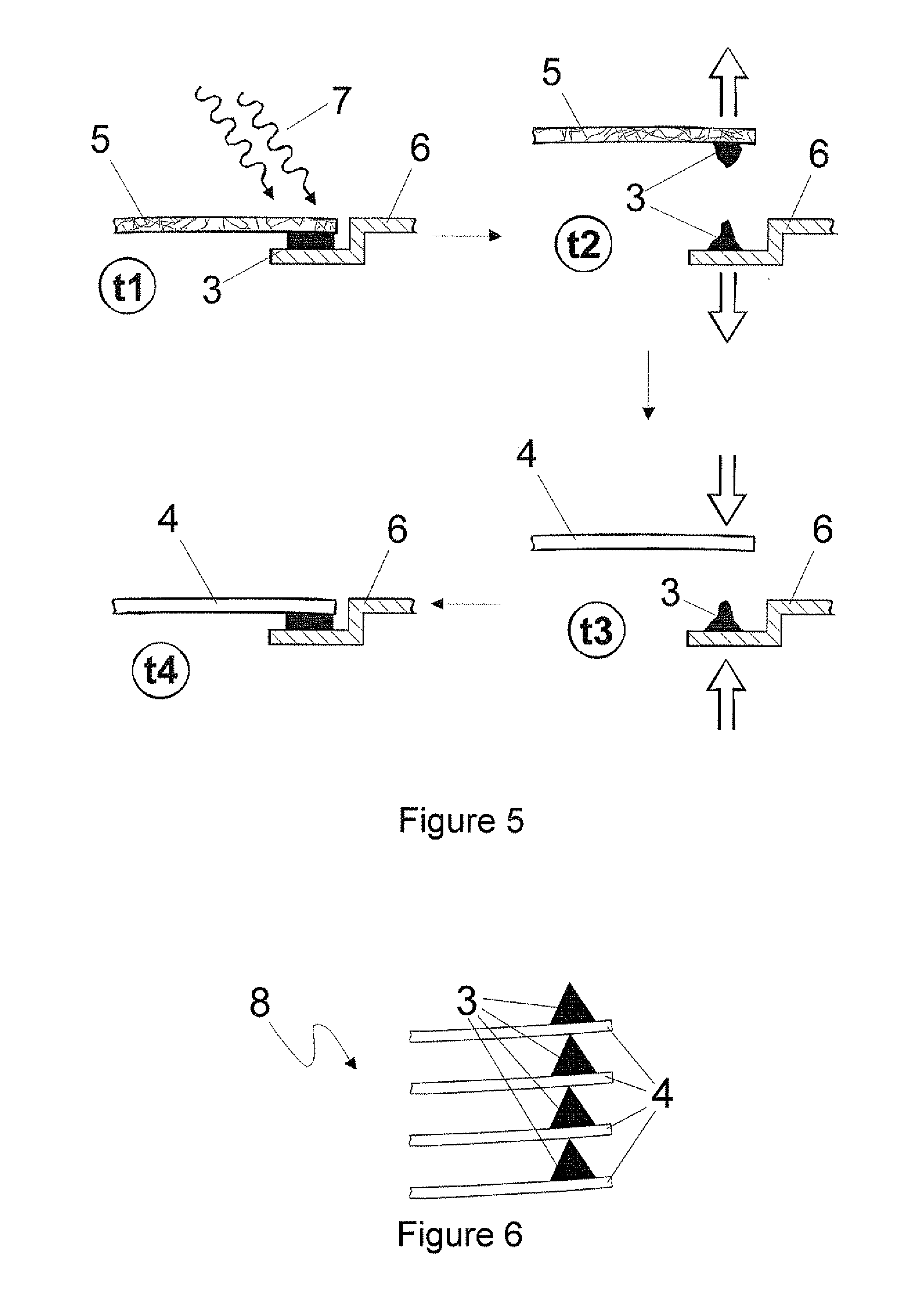Polyurethane polymer for reversible adhesive bonds
a polyurethane polymer and adhesive bond technology, applied in the direction of adhesive types, polyureas/polyurethane adhesives, lamination, etc., can solve the problems of unacceptably restricting the properties of the adhesive bond during its service life, compound release, unwanted properties, etc., to achieve targeted, rapid, reliable debonding, and high cost and complexity
- Summary
- Abstract
- Description
- Claims
- Application Information
AI Technical Summary
Benefits of technology
Problems solved by technology
Method used
Image
Examples
examples 3 to 5 (
Inventive) and 6 to 7 (Comparative)
[0253]In a polypropylene beaker with a screw closure, polymer P-3, and polymer P-4, whose preparation is described below, were mixed using a centrifugal mixer (SpeedMixer™ DAC 150, FlackTek Inc.; 1 min. at 2500 rpm) with the dialdimine BA-1, or with the dienamine BA-2, and also with catalysts, to give a homogeneous material, which was immediately dispensed into an internally coated aluminum tube, which was given an airtight closure. The amounts employed and the types of catalyst are listed in Table 3.
[0254]The polymer P-3 was prepared as follows:
[0255]In a glass apparatus, with stirring and under a nitrogen atmosphere, 1400 g of dewatered polyoxypropylene diol (Acclaim® 4200 N, Bayer; OH number 28.5 mg KOH / g) were reacted with 135 g of tolylene diisocyanate (TDI; Desmodur® T 80 P, Bayer) at 80° C. for 24 hours. The resulting prepolymer had a free isocyanate group content of 2.25% by weight and a viscosity of 11 Pa·s at 20° C.
[0256]The polymer P-4 w...
##ventive examples 8 to 9
Inventive Examples 8 to 9
[0262]The respective constituents of the examples, in accordance with Table 6, were processed in a vacuum mixer in the absence of moisture, and in the quantities stated, to form a homogeneous paste, which was immediately dispensed into an internally coated aluminum cartridge, which was given an airtight closure.
[0263]The polyurethane polymer P-5 was prepared as follows:
[0264]In a glass apparatus, with stirring and under a nitrogen atmosphere, 1780 g of dewatered polyoxypropylene diol (Acclaim® 4200 N, Bayer; OH number 28.5 mg KOH / g) and 500 g of polyoxypropylene triol (Acclaim® 6300, Bayer; OH number 28.0 mg KOH / g) were reacted with 220 g of tolylene diisocyanate (TDI; Desmodur° T 80 P, Bayer) at 80° C. for 24 hours. The resulting prepolymer had a free isocyanate group content of 2.13% by weight and a viscosity of 12 Pa·s at 20° C.
[0265]The ratio between the isocyanate groups (of the polymers P-4 and P-5 and also of the TDI used as drying agent) and the prot...
PUM
| Property | Measurement | Unit |
|---|---|---|
| Temperature | aaaaa | aaaaa |
| Temperature | aaaaa | aaaaa |
| Thermal properties | aaaaa | aaaaa |
Abstract
Description
Claims
Application Information
 Login to View More
Login to View More - R&D
- Intellectual Property
- Life Sciences
- Materials
- Tech Scout
- Unparalleled Data Quality
- Higher Quality Content
- 60% Fewer Hallucinations
Browse by: Latest US Patents, China's latest patents, Technical Efficacy Thesaurus, Application Domain, Technology Topic, Popular Technical Reports.
© 2025 PatSnap. All rights reserved.Legal|Privacy policy|Modern Slavery Act Transparency Statement|Sitemap|About US| Contact US: help@patsnap.com



